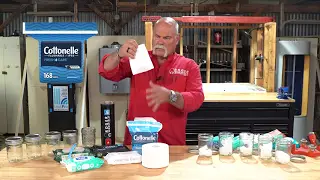“How to Get Insurance to Cover Plumbing DAMAGE” is a question many homeowners grapple with when they discover leaks under their slab or water damage in their home. The reality is that dealing with insurance can be tricky—one misplaced word or misunderstanding can cost you thousands. Whether you’re a homeowner trying to fix a sudden leak or a plumber looking to guide your clients through the process, understanding how insurance policies work is crucial. Below, we’ll break down the most important steps to ensure you’re covered when plumbing problems arise, including how to document damage, what repairs insurance typically pays for, and why communication with your insurer can make or break your claim.
Why Slab Leaks and Water Damage Can Be So Complex
Slab leaks and water damage often occur beneath the surface, literally. By the time you notice signs of trouble—like unexpected water on the floor, warm spots, or a spike in your utility bill—there may already be significant hidden damage. Common symptoms include:
• Discolored or swollen baseboards
• Warped hardwood floors
• Damp spots on carpet or tile
• Moldy smells and damp drywall
Unlike more obvious plumbing failures (e.g., a burst pipe above ground), slab leaks are tucked away under your foundation. The damage can spread unseen for weeks or months. Because of this, insurance companies sometimes dispute how long a leak has been active—and if the leak truly caused the damage you’re claiming.
Document Everything (Especially Early Signs)
When you first suspect a leak, document everything. This includes:
- Meter Checks
Keep an eye on your water meter when no one is using water in the house. If the needle or digital readout shows movement, you may have a hidden leak. - Floor or Wall Damage
Photograph any damp spots on flooring, baseboards, or lower walls. If you catch it early, your images could be the key evidence that your insurance company requires. - Time-Stamped Notes
Keep a running log of when you first noticed moisture or unusual warmth on your floors. If your dog gravitates toward a warm spot, mark down where and when. That detail might seem minor, but it can pinpoint the timing of a hot water leak. - Repairs You Make
If you temporarily patch or clean up damaged areas, photograph and date every step. Failing to capture this info could cause an insurer to argue that the issue pre-dated your policy or was due to another cause.
Why Documentation Is Essential
Homeowners often make the mistake of discovering a bit of water damage, fixing it themselves, and moving on—only to find a far bigger problem later. Insurers sometimes deny coverage if they see no documented trail that proves the leak was active at a specific time or caused the current damage.
Imagine fixing a baseboard that looked a bit warped, only to find two months later that your entire floor is damaged. If you never took pictures or recorded what happened, you might have a hard time proving that the same leak caused both problems. Insurance companies typically want to see that:
• The damage is new (or newly discovered).
• You did your part to mitigate further damage (e.g., shut off water, contacted a plumber promptly).
• You have evidence to link the leak to the damage you’re claiming.
Stopping the Damage Immediately
A key requirement in most homeowners insurance policies is the “duty to mitigate.” This means you must act to stop or reduce further damage as soon as you’re aware of a leak. Examples include:
• Turning off the water to the house if you suspect an active leak.
• Drying out wet flooring or drywall to prevent mold growth.
• Hiring a plumber to diagnose the cause as quickly as possible.
If you fail to mitigate damage—like continuing to use the plumbing for months while the leak erodes soil under your slab—your insurer might push back on covering the full extent of the repairs.
What Insurance Typically Covers—and What It Doesn’t
In most standard homeowners policies, insurance will not pay for the actual pipe repair. That means if a tiny section of pipe under your slab has corroded or burst, replacing that length of pipe is usually your responsibility. However, many policies do cover:
• Leak Location and Testing
Sophisticated equipment, such as electronic leak detection or pressure tests, can pinpoint the leak’s source. This is often a reimbursable cost.
• Access (Digging or Jackhammering)
Getting to the leak is often the most expensive part. Tunneling under a slab can be labor-intensive, and cutting through finished floors (like hardwood or tile) can be costly. Insurance typically covers the expenses associated with reaching the damaged area, so long as the water damage is sudden and accidental.
• Damaged Flooring and Walls
If your hardwood floors or carpet are waterlogged, the cost to replace or restore them is generally covered. The same goes for drywall, baseboards, and sometimes cabinets if they’ve been compromised by water.
• Putting Everything Back
After the plumber finishes, you often need a contractor to restore your home to its original condition. This can include refilling tunnels, pouring new concrete, and repairing or replacing flooring. These costs are usually reimbursable, assuming your policy includes coverage for water damage from plumbing leaks.
The Scenario of “Digging vs. Jackhammering”
You may have multiple options for reaching a leak. Tunneling under the slab prevents you from tearing up your floors, but it can be pricey due to labor. Jackhammering through the top (especially if the leak is in the center of the house) may damage expensive finishes like hardwood or custom tile.
Insurance adjusters generally prefer the less expensive approach. However, if your flooring is older or cannot be easily matched, it might be cheaper overall for an insurance company to pay for an outside tunnel than to replace every inch of floor in your home. In other cases, it may be simpler and more cost-effective for the insurer to have you cut through the slab from above. You’ll want a plumber who can clearly explain these options in detail to the adjuster, so they see the bigger picture cost.
Re-Route vs. Slab Repair
Another strategy is to bypass the leak entirely by running new pipes through the walls or attic, known as a reroute. This approach may involve cutting small holes in walls or ceilings, but it can eliminate future slab leaks without tunneling or jackhammering. However, your insurer will still cover only the access, not the new piping itself. They may consider the overhead reroute more cost-effective if it avoids major slab work or floor replacement.
How to Talk to Your Insurance Company
Avoid Reporting a “Slab Leak” Right Away
If you suspect a leak, it’s often smarter to contact a plumber first—especially if you’re uncertain whether there’s actual water damage. Once you officially tell your insurance company you have a “slab leak,” it goes on record, and your premiums might rise regardless of whether they pay a claim. Instead, consider saying something like:
“I’m calling to check on my policy coverage. If I were to have damage to my floors or walls from a hidden water leak, is that covered? Which parts of the repair would be covered or excluded?”
This approach keeps it hypothetical until a professional confirms that you do have damage. If, after an inspection, you indeed discover real water damage, you can then proceed with an actual claim, armed with knowledge of what your policy covers.
Know Your Policy Details
It’s not just about premiums and deductibles. Look for phrases like:
• “Sudden and accidental” water damage
• “Mold remediation” coverage limits
• “Access and egress” coverage for plumbing issues
• “Wear and tear” exemptions
Many homeowners buy the cheapest policy possible without reading the fine print. Understanding the nuances can help you avoid surprises. If your policy excludes coverage for “wear and tear” or “slow leaks,” the insurer might deny your claim if they suspect the leak has been active for months. A well-documented timeline of when you noticed the damage is essential.
Word Your Claim Wisely
Insurance companies pay for damages to your property—walls, floors, cabinets—caused by a water leak. They rarely pay for the pipe repair itself. If you say “I have a busted pipe under my slab, can you pay for the pipe fix?” they may deny coverage for the entire scenario. Instead, emphasize the interior damage:
“I’ve discovered damage to my floors/baseboards/walls from what appears to be a hidden water leak. I need to know how my policy helps with locating the leak, repairing the damage, and restoring the affected areas.”
Remember, you should always tell the truth about what happened. Just be mindful of phrasing, so the insurer understands that you’re seeking coverage for property damage rather than the direct cost of the pipe repair.
When Insurance Companies Push Back
Even if the damage seems obviously related to the leak, some insurance adjusters may question when it began or if it was preventable. As a homeowner, you can ask your plumber to speak directly to the adjuster. An experienced plumber knows how to explain:
• The location and severity of the leak
• Why it likely occurred recently (or at least caused recent damage)
• How the water infiltration directly led to the floor/wall damage
If the insurer still pushes back, consult a public adjuster or attorney specializing in insurance disputes. However, in many cases, a clear explanation from a professional plumber can settle the matter.
Choosing the Right Plumbing Company
Finding a plumber who understands insurance processes can be invaluable. Some plumbers are accustomed to walking homeowners through claims, meeting adjusters on-site, and explaining the technical details behind leak detection, slab penetration, and restoration. When interviewing plumbers, ask:
- Do you have experience helping homeowners with insurance claims for slab leaks or water damage?
- Are you prepared to explain repair options to an insurance adjuster, including cost breakdowns for tunneling vs. rerouting vs. jackhammering?
- Can you document the problem thoroughly (photos, videos, written notes) to help me prove the damage timeline?
A knowledgeable plumber can significantly improve your odds of a smooth claim process.
Sponsored by Leak Pro
This post is sponsored by Leak Pro, a leading provider of specialized leak detection equipment tailored for plumbers working on domestic water lines. If you’re a plumbing professional or a company wanting to expand your services in slab leak detection, Leak Pro has you covered with cutting-edge technology and comprehensive training. Visit Leak-Pro.com to learn how their gear can help you locate leaks more accurately and offer a higher level of service to your clients.
Final Tips to Protect Your Home and Your Wallet
• Inspect regularly: If you have older plumbing, schedule periodic inspections.
• Upgrade your policy: Ask about adding water leak endorsements or riders if your current coverage is limited.
• Act fast: Once you see or suspect water damage, get a professional opinion immediately.
• Negotiate: Insurance adjusters often follow a preset checklist. If they underestimate the repair, you can push back with detailed contractor estimates.
By documenting early, choosing your words carefully when speaking to insurers, and working with a plumber who understands the ins and outs of water damage claims, you can drastically improve your chances of receiving adequate coverage.




